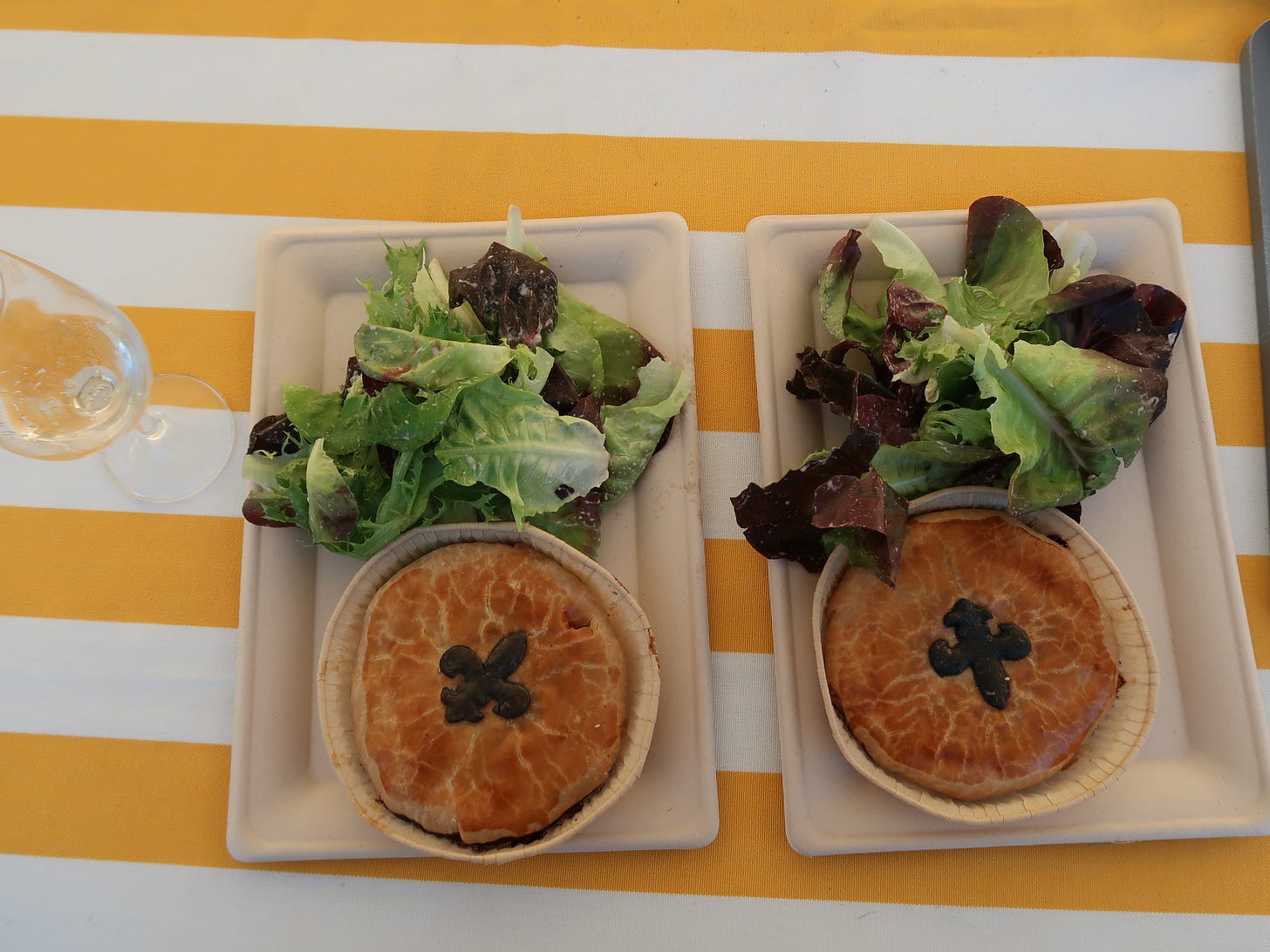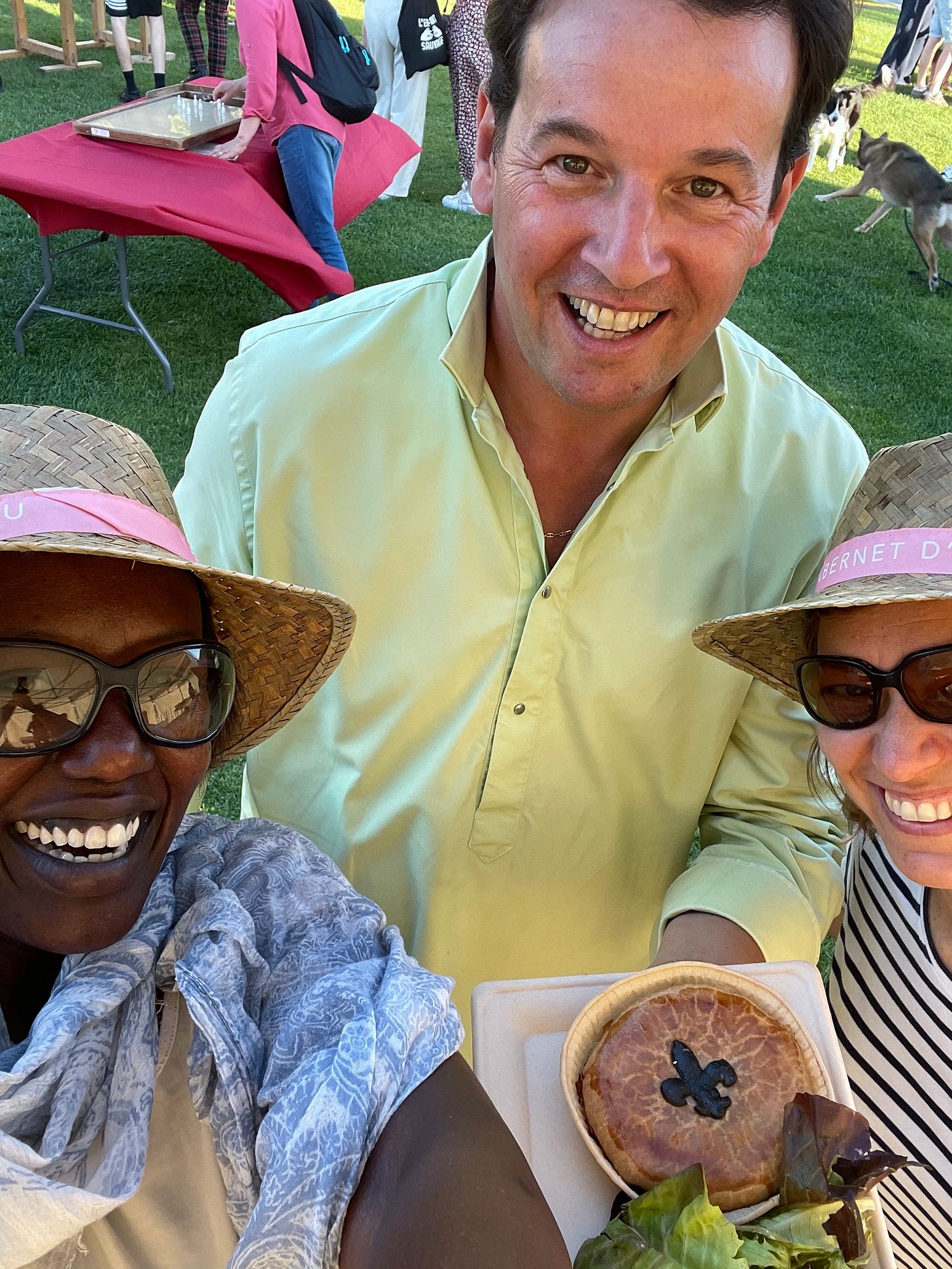It’s unlikely and very rare to meet the creator of a local food specialty.
And meeting Chef Pascal Favre-d’Anne happened quite unexpectedly.
We were spending the summer in Angers, in the heart of the Loire Valley.
Every summer, the city hosts a local wine festival called Tempo Vigne that celebrates local winemakers from Anjou.
It’s an outdoor festival featuring 15 independent wine growers with music, entertainment, local wines, and food.
The king of wines in this part of the Middle Loire Valley is Chenin Blanc, a white wine that comes in many styles, from dry to sweet to sparkling.
However, red wines like Cabernet Franc and Cabernet Sauvignon, and the regional favorite, Rosé d'Anjou, are also notable.
The wine festival is a celebration of local products where the wines are paired with regional specialties.
At that point, I had heard about La Gouline but had not had the chance to taste it.
While walking around the different booths and sipping on crisp Chenin Blanc wine, we made our way over to the food section.
I could not have been more thrilled to see La Gouline as one of the food options available.
Standing at the booth was none other than Chef Pascal Favre-d’Anne, the creator of La Gouline.
Seizing the opportunity, we peppered him with questions about this regional specialty.
Pascal Favre-d’Anne was one of the first chefs in Angers to receive a Michelin Star.
Even though he closed his restaurant after the pandemic, he continues to be involved in the gastronomy scene in the region.
“La Gouline,” he told us, is the emblematic dish for Angers. About “8 or 10 years ago”, he added, “Angers was known for wine, but not a traditional plate.”
Seeking to find a dish as emblematic as the famous wines, a competition was created.
In collaboration with the city, the goal was to come up with the most representative dish of the city.
Amongst a range of entries, La Gouline (la Gouline Angevine) won and is today considered Anger’s emblematic dish.
La Gouline is a sort of pie or “tourte,” a savory, golden-brown pastry with a flaky crust made with a medley of regional ingredients.
It includes mushrooms from Saumur town, also in the Loire Valley, renowned for its button mushrooms which grow in dark, humid caves.
The meat filling is Rillauds d'Anjou, an Anjou culinary specialty that consists of pieces of pork belly, including the fat and the softer part of the meat
A creamy cheese sauce made with the local Tomme d'Anjou cheese and IGP-protected shallots from Anjou enhances the flavors.
And, a splash of sweet Chenin Doux wine adds a subtle sweetness to the pie.
On top of the savory, golden-brown pastry is a black design of the lily or fleur-de-lis, the symbol of Angers.
The first time I tasted the pie, I was happily surprised by the flavors and ingredients.
While the hearty pork added richness and depth, the mellow and delicate shallots, mushrooms, and creamy sauce added layers of nuanced flavors.
It’s a substantial dish, and according to Pascal, its name refers to a kissable child’s face in the Angevin dialect.
Pascal’s goal, as he shared, “is to make La Gouline famous in France and beyond.”
An admiral goal and also very calculated. I couldn’t help but think about the creation of gastronomy for marketing, identity, politics, and power.









Sounds indulgent and delicious!
What, if any herbs? Do you know?